A representative from CourseHorse, a discovery and booking tool for local classes, contacted me to offer a free class in exchange for writing a review on my blog. With multiple classes in art, cooking, tech, professional, life skills, performing art, language and even classes especially for kids, it was hard to choose. Since I’ve collected blown glass for decades and Decatur Glass Blowing was on their list, I chose a 2 hour class on a friday night and made my first bowl. CourseHorse offers several other glass blowing classes in Georgia and the Atlanta area, you may find one closer to you.
Seven of us attended the one-on-one class at Decatur Glassblowing, which afforded me the chance to be taught by a veteran glassblower who had been practicing the art for 44 years. The other assistant to founder Nate Nardi’s studio was much younger, but highly skilled as well. As I chatted with my teacher, he gave me a short history lesson about glass in America. Glassblowing dates back to the 1st century BC and the Roman Empire, but quickly expanded into the Mid East and Europe.
In the early 1600s a few Germans and Poles arrived by ship to Jamestown, VA and discovered vast amounts of forests to fuel their ovens, endless sandy beaches and oyster shells for lime. A glass-house was built in 1608 and the first factory began exporting glass made in the U.S. back to England. “New Jersey and Pennsylvania had excellent sands and extensive forests, so for many years the glass houses of New Jersey dominated in glass production. To the north in Massachusetts, on the Island of Sandwich, there arose a group of glass houses and the glass produced there still bears its name.”
Here is a more in depth glossary of tools and equipment used in glassblowing.
We first had a demo on safety issues and the steps that we’d be following during the process. Everyone wore protective safety glasses and a heat resistant arm guard was provided during the shaping of the bowls. At no time was any one of us left on our own, but the teachers also encouraged us to engage without fear. As an admitted scaredy-cat around any potential hand or eye threats, my fears proved relatively unfounded. Once the glass is heated on the end of the rod, it’s dipped into colored glass chips and rests gently for a second or two.
During the initial demonstration, my instructor uses a clamp like cutting tool to snip the hole for the opening of the bowl.
Any glass that cools down too quickly is liable to crack, so there is a slower oven for annealing or cooling down from the initial 2,000 degrees in the firing oven or “glory hole”.
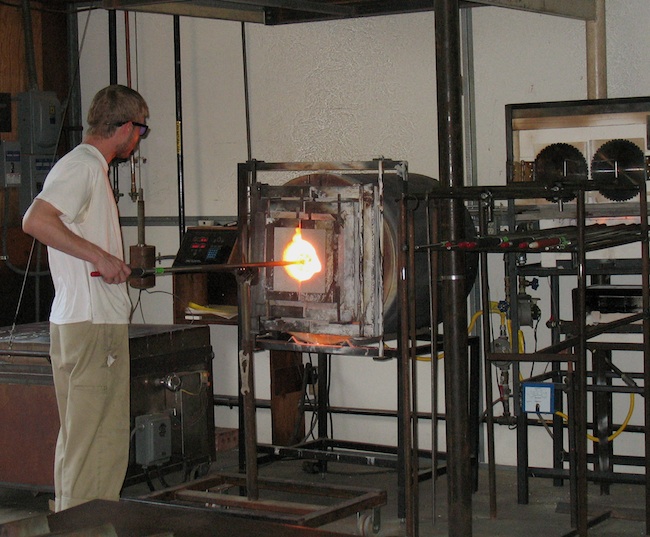
Heating the molten glass on the end of the blowpipe in the “glory hole”. The process of “gathering” is similar to using a dipper to take honey from a jar. Glassblowing furnaces are typically gas-powered and are heated to 2,000 degrees Fahrenheit.
This video is a great overview of Nardi’s studio and processes.
CourseHorse was begun in 2011 by two NYU graduate students. After an unproductive search for a cooking class, the duo startup team of Katie Kapler and Nihal Parthasarthi won $75,000 from Stern New Venture Competition for their idea. Since then, Course Horse offers +70,000 classes to over 200,000 members in over a dozen cities around the country. They’ve also been noted in Forbes as one of America’s Most Promising Companies. Many thanks to Courtney, who signed me up!
This was a fascinating and educational class. While glassblowing is seemingly spontaneous, the skills required to produce the end results can be honed over decades. I was particularly taken with Nate’s dragonfly glass sculpture, (more bugs here) and some of his earlier grad school sandblasted abstract glass work. You’ll just have to stop by and see for yourself, since I didn’t get a photo of those last fabulous pieces. I’ll be posting my own bowl here at a later date, after I pick it up.
An open house between 5pm and 10pm is coming up this Saturday, April 29th and again on May 20th. See the studio’s Facebook page for event updates. Demos, food, music and drink are provided free of charge. Raffle tickets for giveaway items are only $1.
Decatur Glassblowing, 250 Freeman Street, Decatur, GA 30030.
ph: 404.849.0301
email: natenardi@yahoo.com
Hours: Gallery | Tues-Sat |2-6 pm
CourseHorse is currently still in beta mode for Atlanta, but more classes will be coming soon! Be sure to sign up with your email address and locale to receive more information on when classes near you will be available.
Finally, a 5 minute demo from Jamestown, Virginia’s Glasshouse. Visitors can see the remains of the original furnaces used by those early glassblowers and watch as modern glassblowers produce wine bottles, pitchers, candleholders and various other glass objects. Today’s glass furnaces are heated by natural gas, rather than by wood as in 1608. Glassblowers, however, use tools and methods similar to those of the 17th century.


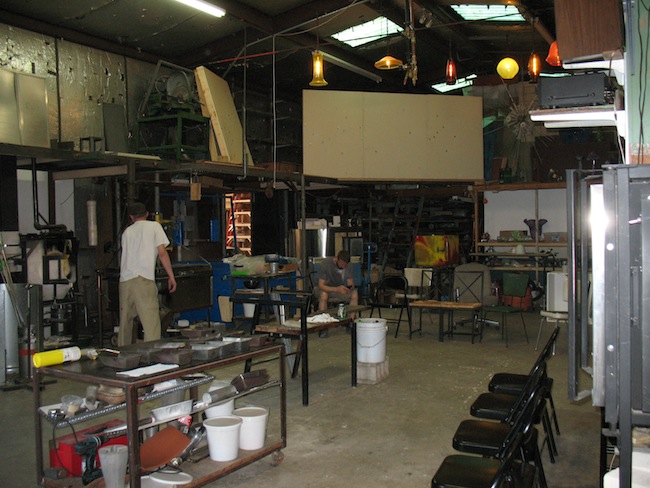
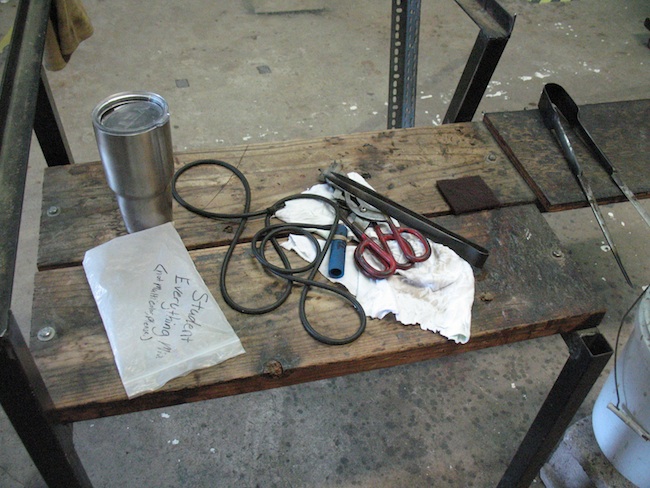
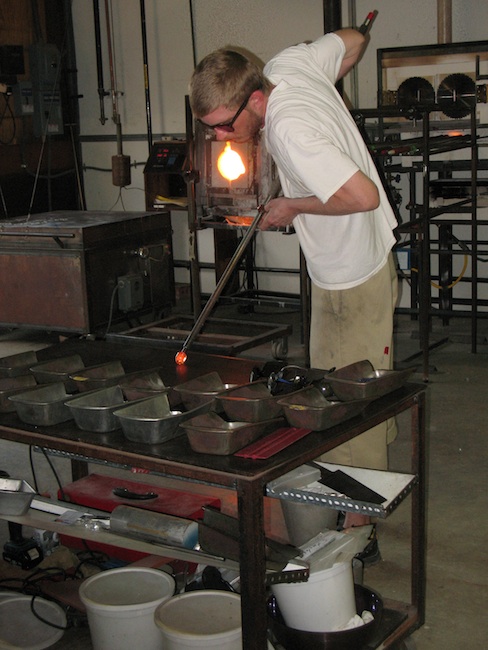
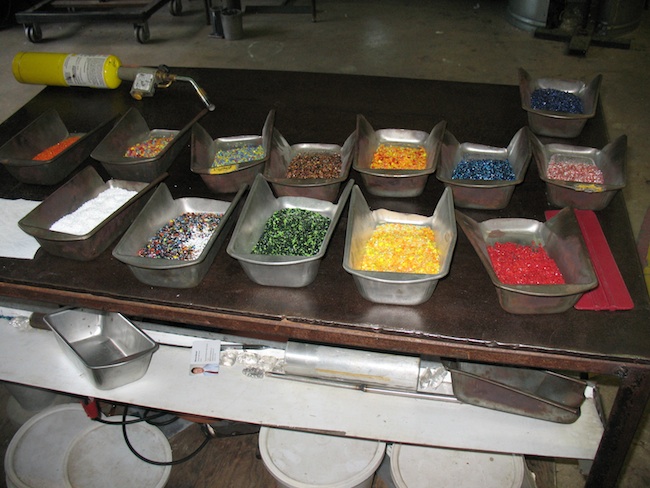
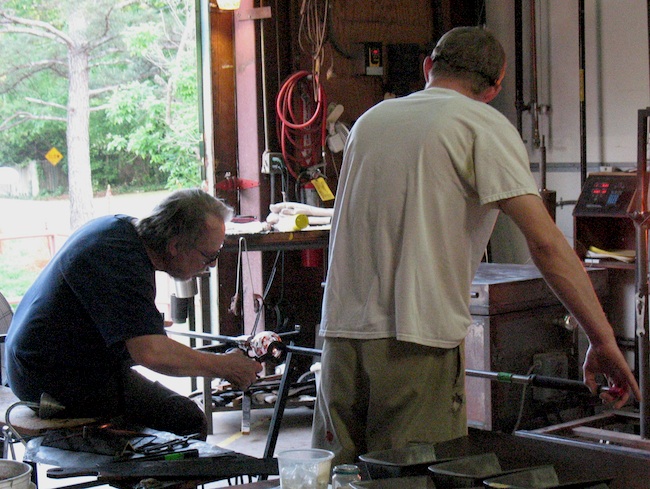
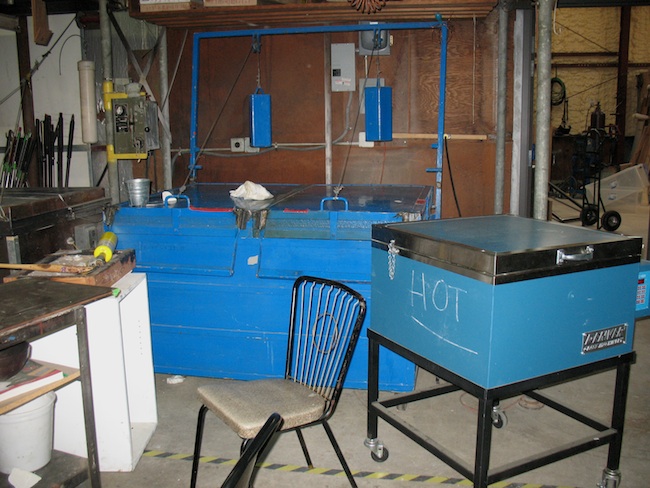
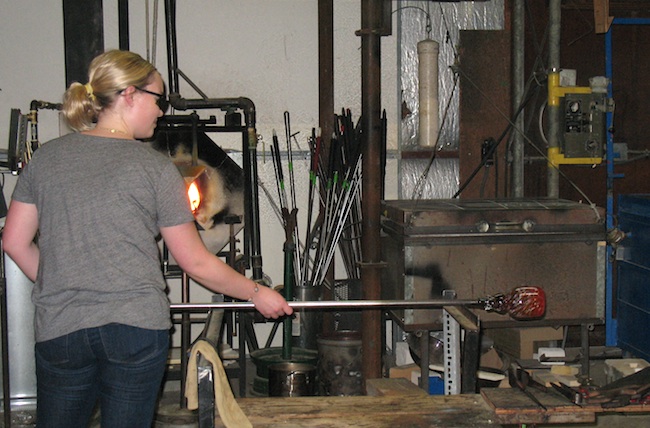
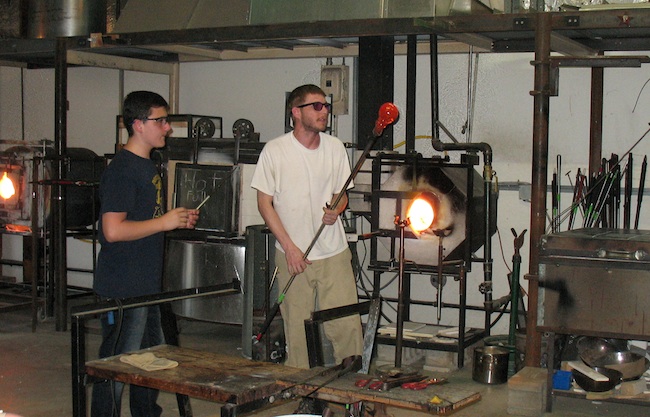
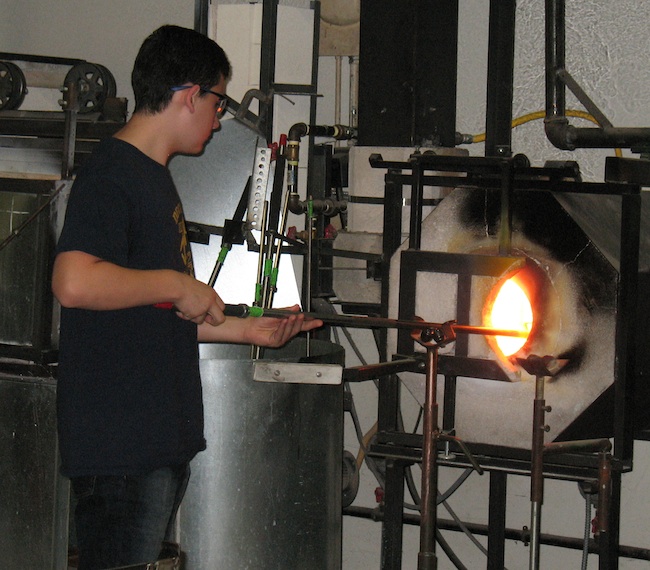
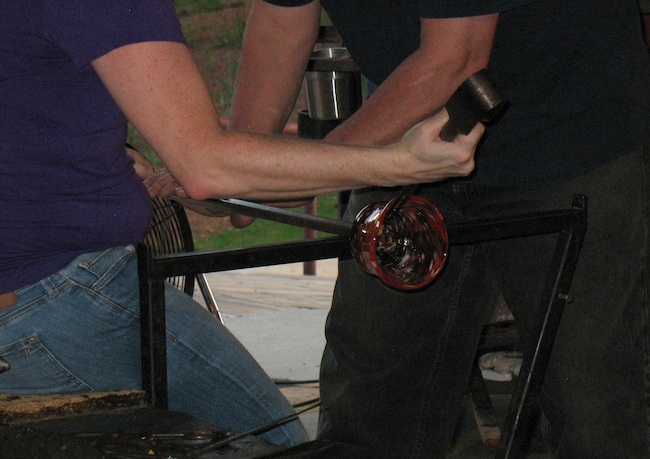
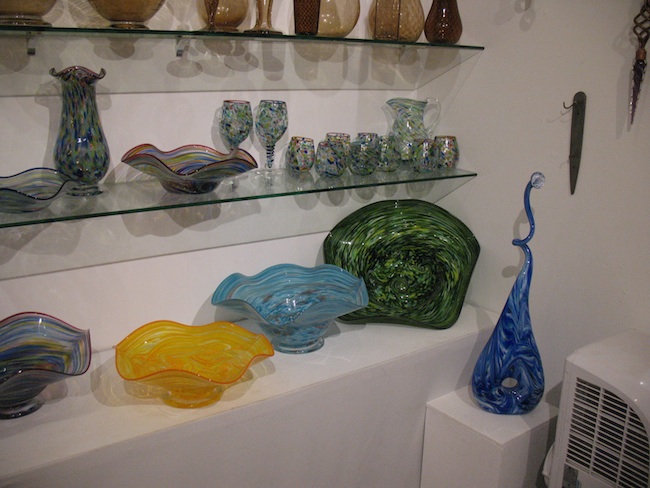
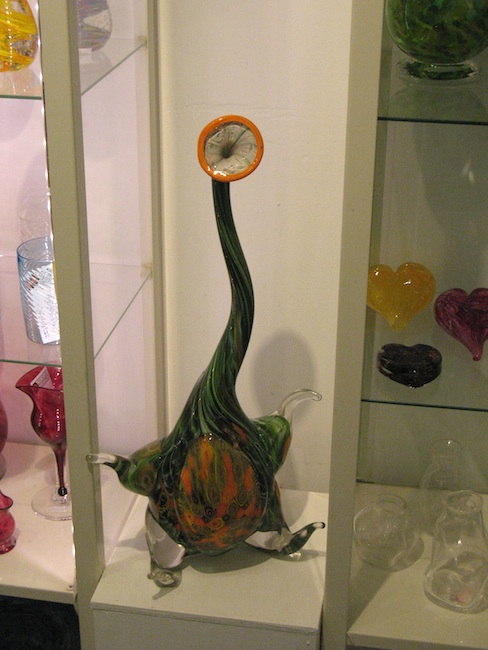
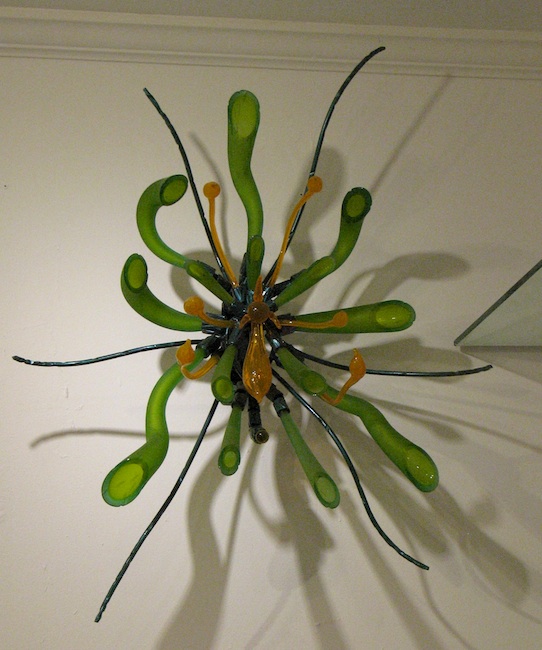
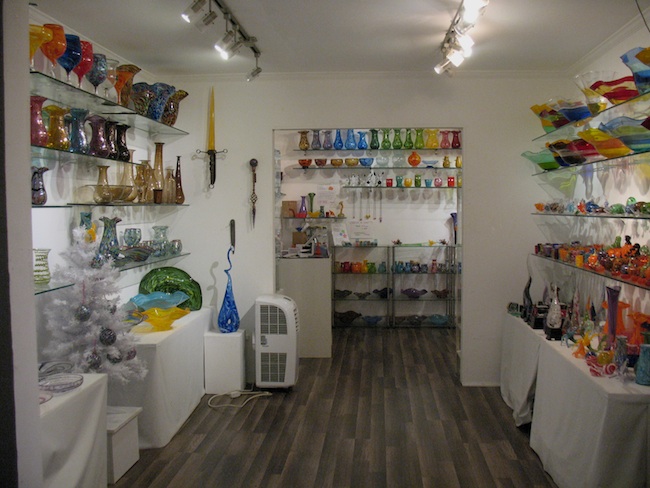

Thanks for the cool article. I tried it once in college when Gilhooley put on a workshop at NAU in Flagstaff. He built the studio for glass blowing there in 1969. The work is fantastic
Check out CourseHorse and all the classes they offer, too! I think you mean Dale Chihuly. Yes, he’s done several installations in the Atlanta Botanical Garden here. Nate has some glass sculptures that rival his!
I live in Michigan and every time I’m in Decatur I make it a point to stop in there and buy a couple of things. Hope to be back there this week. Want to check out the bees he has done and of course get a couple of balls. Love that place!
How nice that you still support Decatur artisans and artists, Nancy!